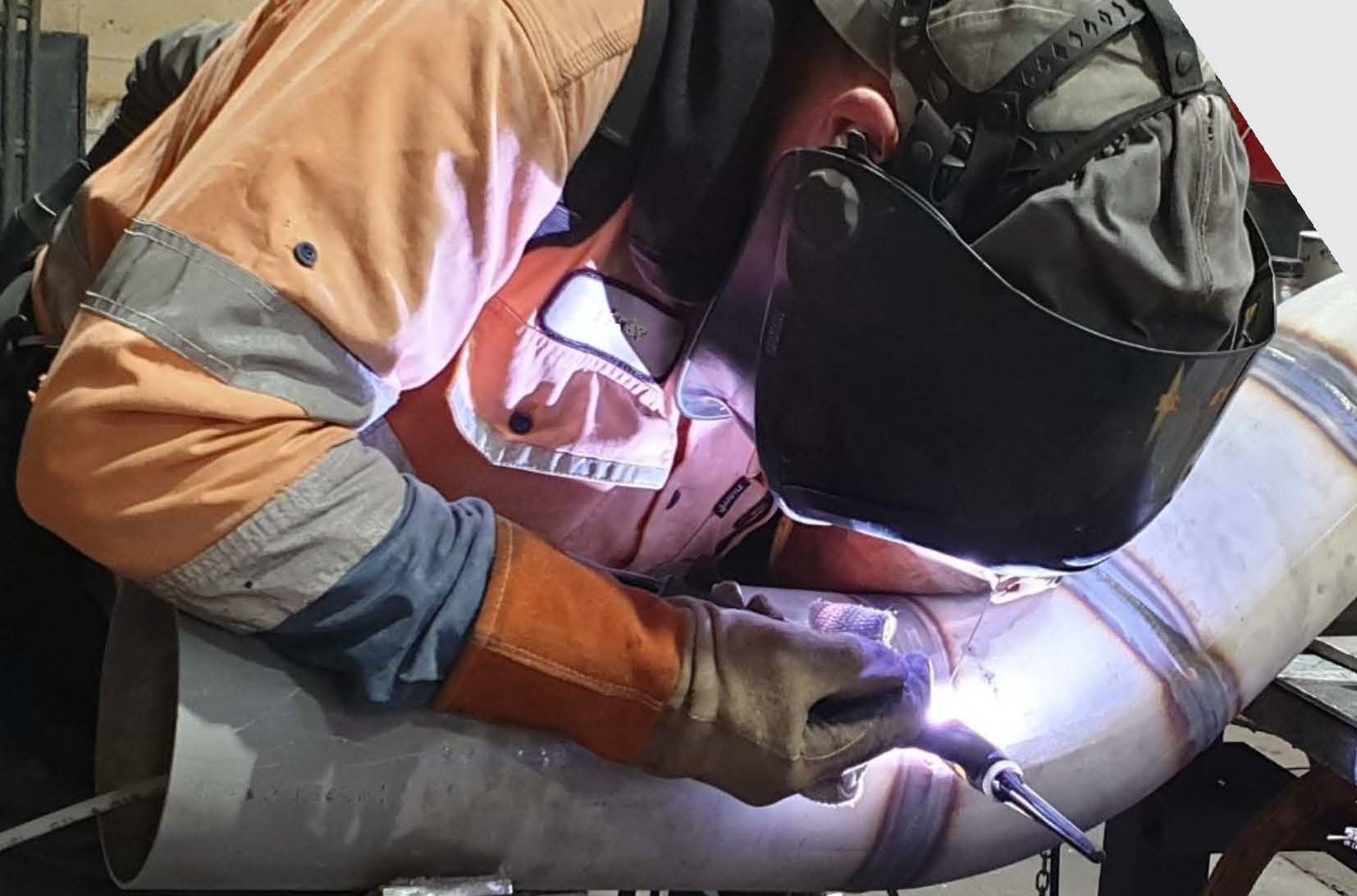In the complex world of welding, understanding the nuances of different welding positions cannot be overlooked.
From the meticulous planning of welding procedures to the on-the-spot adjustments, welding is an art that enhances the efficiency, and productivity of the welding operation.
Welders are working in various welding positions which bring their own set of challenges. This includes welding procedures which should take into account how gravity influences the process which can impact the outcome.
Within the framework of AS/NZS 1554.1 like any other welding standard, the utilization of qualified welding procedures is a mandatory prerequisite. These procedures play a critical role as a cornerstone of the quality system component within the Factory Production Control as per AS/NZS ISO 3834 Quality Requirements for Fusion Welding of Metallic Materials Standard. Essentially, welding procedures serve as the guiding beacons provided to welders, embodying the precise instructions necessary for welding in any position.
The nuances of each welding position necessitate a range of parameters and techniques for welding consumables to ensure the weld fusion not only meets the standards but also withstands the unique challenges posed by gravitational shifts
The consideration of gravity for welders becomes an integral part of a welding procedure development in diverse terrains of flat, horizontal, vertical, and overhead positions. Welding processes, techniques, and settings must comply with the welding consumable manufacturer’s recommendations for each welding position qualified as well as comply with industry standards to maintain the integrity of the welding procedure.
However, it’s crucial to recognise that the attempt to broaden the scope of qualification to encompass all positions may come with challenges. Such an expansion is likely to necessitate lower settings when welding in flat positions, potentially resulting in a diminished deposition rate which will directly affect productivity.
AS/NZS 1554.1 considers the macro test as essential to validate the adequacy of fusion, particularly when parameters go beyond the boundaries more than recorded parameters during the welding procedure test. For example, when the arc voltage exceeds the 7% range, the amperage exceeds the 10% range, the torch’s travel speed deviates beyond the 15% range, the specification thickness exceeds the range of 0.5 to 2 of material thickness defined in the procedure and when there is more than a 25% variation in the specified number of runs, in the context of flux-cored arc welding processes. These provisions go beyond the recommendations provided by manufacturers, adding an additional layer of assurance for fusion and penetration.
The effect of gravity depends on the welding position as follows:
- In the flat position, gravity has minimal impact, which allows for excellent control over the molten metal. This positioning also allows for even heat distribution, facilitates enhanced bead formation, and enables higher welding speeds, maximizing productivity.
- During horizontal welding, gravity significantly influences the molten metal in the weld pool. Welders must maintain a careful balance to achieve proper penetration while preventing problems such as excessive sagging or uneven distribution of the weld metal. These issues can lead to underfill and/or undercut on the upper side of the groove and overlap and lack of fusion on the lower side.
- When it comes to overhead welding, the welder faces challenges due to gravity acting against them. This can cause the molten metal to drip or sag, making it essential for the welder to manage the deposition rate and ensure proper penetration. In this position, electrode manipulation and precise arc control are critical elements, requiring a slower welding speed. Using the same setting in the downland position will significantly affect the deposition rate.
- Vertical welding; however, involves welding in an upward or downward direction against gravity. In upward vertical welding, gravity tends to pull the molten metal downward, making it challenging to control the weld pool. Downward vertical welding is often considered more challenging in controlling the downward flow of molten metal which requires heightened skill and precision. Optimizing the parameters for both directions and maintaining proper weaving for vertical up becomes crucial for consistent bead profile and ensuring fusion. Welders need to carefully manage travel speed to maintain proper penetration and bead appearance, following the optimized procedure for both directions of vertical welding position.
AS/NZS 1554.1 allows the development of a welding procedure specification for prequalified joints in multiple positions, and it sets specific parameters to ensure proper fusion for practical use. As we continue to refine our understanding of welding science, optimizing procedures, and respecting the unique demands of each welding position, we create pathways for the management of technical challenges outlined in this article to improve productivity and reduce costs and time linked to potential rework and structural failures.
Further details can be found in HERA Guide 03:2024 Rev 2 which has been recently revised. HERA Technical Guide. 03:2024│AS/NZS 1554.1: A Guide to the Qualification of Welding Procedures – Positions qualified for butt welds is now available from the HERA Library.


